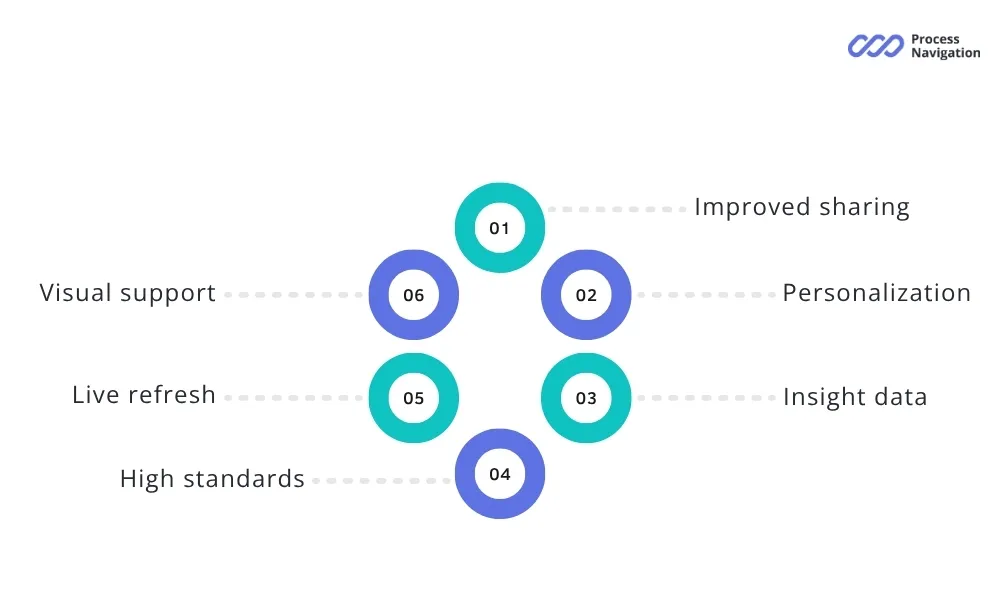Modern manufacturing is undergoing radical changes associated with the transition from traditional paper-based processes to digital solutions. Digital work instructions are becoming not just a trend, but a necessity for companies striving for operational excellence. In an environment of increasing competition and growing quality requirements, electronic work instructions provide businesses with the tools to achieve new levels of efficiency.
The zero-paper initiative, which is being implemented by leading manufacturers, not only reduces environmental impact but also provides significant economic benefits.
The transition to paperless work instructions affects all aspects of manufacturing, from staff training to quality control. Interactive work instructions are becoming the foundation of the connected worker platform, which brings people, processes, and technologies together into a single ecosystem.
What are Digital Work Instructions?
Digital work instruction is an interactive system of electronic manuals that provides employees with step by step instructions to perform production tasks on digital devices. Electronic work instructions combine text, images, videos and interactive elements into one platform accessible on tablets, smartphones or production terminals.
Unlike static paper based instructions, this type of manuals can adapt to specific production conditions and provide personalized information.
Key features of digital work instructions:
- Interactivity and instant feedback,
- Automatic updates and version control workflow,
- Integration with other systems,
- Multimedia content for better understanding,
- Performance tracking and real time data capture.
Digital work instructions for manufacturing are built on a cloud first architecture that provides:
- Scalable digital work instructions for any production volume.
- Automatic updates and version control workflow.
- Multi-user access with differentiated rights.
- Integration capabilities with existing enterprise systems.
Digital work instructions are part of the bigger picture of Industry 4.0. As manufacturers move to smarter and more connected manufacturing environments, interactive digital work instructions bridge the gap between manual processes and data driven automation. These are not just a technological upgrade but the key to smart factories where real time data collection and analysis drives optimization and enables smart manufacturing practices.
Benefits of Digital Work Instructions

Digital work instructions are the way to paperless production, on electronic devices like computers, tablets, smartphones, AR equipment or any mobile devices.
They have more than traditional methods:
- Better Knowledge Transfer: Beyond just documenting procedures, these smart tools transfer important tribal knowledge to employees, making complex processes easier to understand. Tribal knowledge is transferred in real time, new employees can access expertise that was previously only stored in the memory of more experienced employees, improving knowledge retention.
- Personalization: Reliable digital work instructions can be tailored to different users, whether they are experienced technicians or beginners. So workers at all levels have the tools they need to work effectively and overall operational efficiency improves.
- Data Based on Knowledge: Digital workflows capture crucial production data on worker performance that can be used for continuous improvement. Analytics collect crucial information like task completion time, error rate and consistency and managers can see overall productivity.
- Visual Support: Visual instructions can be augmented with images digital work instructions, videos and AR to make it easier to understand, reduce errors and increase accuracy. Visual aids help workers get instructions faster and better instead of just text, ensuring workers complete tasks correctly.
- Real-time Updating: Unlike paper manuals that take a lot of time and effort to update and distribute, work instructions can be updated and distributed in real time to keep the whole organization on the same page with the latest standards and procedures. This real time guidance is especially important in industries where processes, tools or safety regulations change frequently.
- Quality: Quality digital work instructions are designed with key features to make it more user friendly and engaging. Moving from traditional to dynamic instructions means users can easily access and interact with the content and therefore understand and apply the instructions better, resulting in fewer errors.
Digital Work Instructions Examples
Digital work instructions connect various areas of manufacturing to make things clear, consistent and efficient. Here are a few examples:
- Assembly Line: Digital Work instructions help workers follow assembly steps correctly on the production line, reduce mistakes and improve product quality. With visual aids and step by step procedures workers can understand the assembly process better and be more productive, ensuring tasks are completed correctly.
- Quality Control: Consistent performance of quality checks by workers, reduce mistakes and defects. Digital instructions can guide inspectors through standardized checks, industry compliance and reduce human error.
- Employee Training: Training digital work instructions provide new employees with interactive and engaging content to reduce training time. Frontline workers get faster onboarding and perform better without the need for long classroom training.
- Safety Protocols: These instructions ensure safety procedures are followed correctly, reduce workplace accidents. With clear and concise instructions and real time guidance, workers are less likely to miss safety steps or safety checks when performing complex tasks.
- Standardization: Standardized instructions guarantee efficiency — clear procedures means all workers do the same, which improves quality review. Standardized work instructions reduce product variation and ensure consistency across multiple shifts or locations.
- Machine Setup: Clear step by step machine setup instructions ensure your equipment is calibrated and ready for production. Reduce setup errors and avoid downtime and improve changeovers.
- Maintenance: Detailed maintenance manuals reduce downtime and ensure repairs are done correctly. Give workers accurate and easy to follow maintenance manuals and keep equipment in top condition and avoid costly repairs.
- Inventory Management: Clear and concise inventory instructions improve operational efficiency. Digital instructions help employees follow best practices for storing, inventorying and handling materials, reduce waste and optimize inventory processes.
- Field Service: Field technicians get real time guidance, increase speed and quality of service. With digital work instructions technicians can resolve issues in the field quickly and service calls are done efficiently.
- Compliance with Environmental Regulations: Digital work instructions ensure employees comply with regulatory requirements and sustainability standards. Detailed instructions help employees comply with environmental policies so the company can achieve its sustainability and compliance targets.
How to Create Digital Work Instructions
Creating digital work instructions is more than just converting paper documents into an electronic format — it’s about other digital transformation initiatives that replace paper based instructions. To get the most out of it, you need to create work instructions in a way that makes users understand and engage better.
Here are some tips to make your work instructions work:
- User Focused: Always think about the skill level and familiarity of the worker with the task. Use simple language and no industry jargon that will confuse the user, make it accessible to all. Personalize the instruction to the worker’s skill level so they don’t get frustrated and learning is fun.
- Multimedia: Add diagrams, images and videos to help understanding. Interactive elements increase engagement and make complex tasks easier to do. These visual tools create a more immersive learning environment so workers can see the outcome of each step.
- Accessibility: Make the instruction available to all workers wherever they are on the shop floor. Quick access means more productivity and less errors. Easy navigation across digital platforms means workers can find the instruction quickly, less downtime and higher task completion rate.
- Regular Updates and Feedback Loops: Update the instruction based on user feedback to keep it up to date and in line with the latest process and equipment. This prevents obsolescence and continuous improvement. Staff feedback means manufacturers can stay on top of shop floor needs and concerns.
- Track Usage and Effectiveness: Use data analytics to see how often and how well the instruction is used. This will help improve the instruction, optimize the process and increase overall efficiency. The ability to track metrics such as time taken to complete a task, completion rate and error rate gives manufacturers valuable insights into their workflow.
- User Interface: The interface should be simple and easy to use so workers can navigate between steps and procedures easily. The less complex the interface, the less cognitive load on the worker and the worker can focus on the task.
- Evaluate Pricing Plans: When choosing digital work instructions software, evaluate the pricing plans for flexibility and affordability. Look for free trials and discounts to save more and make creation more efficient.
Methodology for Successful Implementation
| Phase | Period | Description |
| Assessment и Planning | 4-6 weeks | • Analysis of the current state of existing processes • Calculation of return on investment and development of a business case • Selection of a technology stack • Development of a change management strategy |
| Pilot Implementation | 6-8 weeks | • Selective digitization of processes • User training programs • Establishment of performance indicators • Feedback collection systems |
| Scale-up | • Enterprise-wide implementation • Activation of advanced features • Integration with other systems • Continuous improvement processes |
Critical Success Factors
Executive support: Strong leadership commitment ensures resource allocation and organizational alignment.
User-centric design: End-user involvement in the design process is critical to high adoption rates.
Comprehensive training: A multimodal approach to training, including:
- Practical workshops
- Online training modules
- Mentoring programs
- Ongoing support systems
Performance evaluation: Regular evaluation against established KPIs ensures continuous improvement.
Common Mistakes during Implementation
Strategic Miscalculations
Underestimating organizational change: Many companies focus on technological aspects, ignoring the human factor. The change management process should include:
- Comprehensive training programs
- Change champions at every level
- Gradual rollout with pilot projects
- Continuous feedback collection and improvement
Lack of clear ROI metrics: Without clear KPIs, it is difficult to assess the success of implementation. It is necessary to define baseline metrics and tracking mechanisms.
Technical Errors
Incorrect system architecture:
| Error | Consequence | Solution |
| Lack of offline capabilities | Production disruptions | Hybrid online/offline architecture |
| Poor mobile optimization | Low user adoption | Mobile-first design approach |
| Inadequate integration | Data silos | API-first development |
| Insufficient scalability | Performance issues | Cloud-native architecture |
Ignoring user experience: Complex interfaces and poor navigation lead to low adoption rates. User-centered design should be the top priority.
Content Issues
Information overload: Trying to digitize all existing documentation without restructuring leads to:
- Cognitive overload for operators
- Longer task completion times
- Higher error rates
- User frustration
Lack of standardization: Different formats and approaches in different departments create confusion and inefficiency.
Insufficient visual content: Text-heavy instructions without visual step-by-step guides are less effective. The ideal ratio is 70% visual content and 30% text.
Organizational barriers
Resistance to change: Staff resistance to new technologies requires a systematic approach:
- Early involvement in the design process.
- Clear communication of benefits.
- Training and support programs.
- Recognition and incentive systems.
Lack of executive support: Without strong leadership commitment, digitalization projects fail.
Leading-edge Tech in Digital Work Instructions
Artificial Intelligence and Machine Learning
Predictive maintenance integration: AI-powered digital work instructions predict equipment failures and automatically trigger maintenance procedures.
Adaptive learning systems: Machine learning algorithms analyze performance data and personalize instruction content for each operator.
Augmented reality
AR in manufacturing:
- Virtual assembly guides overlaid on physical components.
- Real-time quality check with automated defect detection.
- Remote expert assistance via AR collaboration tools.
- Training simulations in a safe virtual environment.
Internet of Things Integration
Smart manufacturing ecosystems: Feedback from IoT sensors creates closed-loop systems where digital work instructions adapt to conditions in real-time:
- Temperature and humidity control.
- Machine speed optimization.
- Quality parameter monitoring.
- Predictive analytics for process improvement.
Blockchain for tracking: Immutable audit trails Blockchain technology provides tamper-proof recording of all manufacturing activities, which is critical for regulated industries.
ProcessNavigation is a comprehensive platform that combines all aspects of digital work instructions into a single solution. The system integrates seamlessly into existing production processes, ensuring a smooth transition from paper-based operations.
Key features:
- No-code content creation tools for quick creation of instructions.
- Advanced analytics dashboard with real-time KPIs.
- Multi-device compatibility, including rugged industrial tablets.
- Enterprise-grade security with role-based access control.
The Future of Digital Work Instructions
Trends
Autonomous production Integration with autonomous systems, where digital work instructions become part of decision-making processes using artificial intelligence.
Digital twins Virtual copies of physical processes allow instructions to be tested and optimized in a virtual environment.
5G connectivity Ultra-low latency connectivity enables real-time collaboration and the use of advanced AR/VR applications.
Quantum computing Advanced optimization algorithms for complex manufacturing processes.
Forecasts
By 2027, it is expected that:
- 85% of manufacturing companies will use digital work instructions.
- 60% reduction in traditional paper-based processes.
- 40% increase in production efficiency through the integration of artificial intelligence.
- Widespread adoption of mobile work instructions in discrete manufacturing.
FAQ
Built-in feedback, automated data collection, performance analytics and suggestion systems to identify improvement opportunities. Integration with lean tools for data-driven decision making to optimize processes.
Yes, especially in pharma, aerospace and automotive. Digital work instructions provide superior compliance traceability, automated audit trails, electronic signatures and real-time documentation. FDA, EMA and other regulators actively support digitization.
Yes, through various integration approaches: REST APIs, middleware, edge devices, protocol converters. Modern digital work instruction platforms support connectivity with legacy MES, ERP, SCADA systems. A gradual modernization approach minimizes disruption.
Key metrics: first pass yield, overall equipment effectiveness (OEE), time to competence, documentation accuracy, compliance. Advanced analytics platforms provide real-time dashboards with custom KPIs for various stakeholders.
Yes, advanced platforms provide full offline functionality with auto-sync when connectivity is restored. Local caching ensures access to critical instructions during network outages. Hybrid cloud-edge architecture guarantees business continuity.
-
 Maintenance Plan: What Is It And How Does It Work
Maintenance Plan: What Is It And How Does It WorkIn modern manufacturing, equipment downtime costs businesses thousands of dollars an hour. The difference between...
Technology
-
 Competency Management
Competency ManagementModern businesses face a big challenge: how do you ensure every employee has the skills...
Technology
-
 Unlocking the Benefits of Total Quality Management
Unlocking the Benefits of Total Quality ManagementIn today’s competitive world, the quality of products and services is becoming the key to...
Technology
